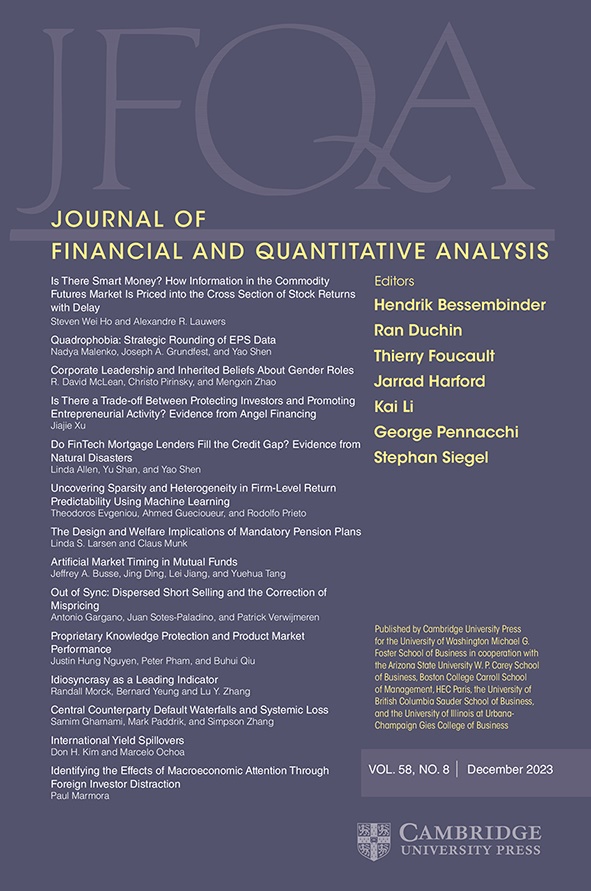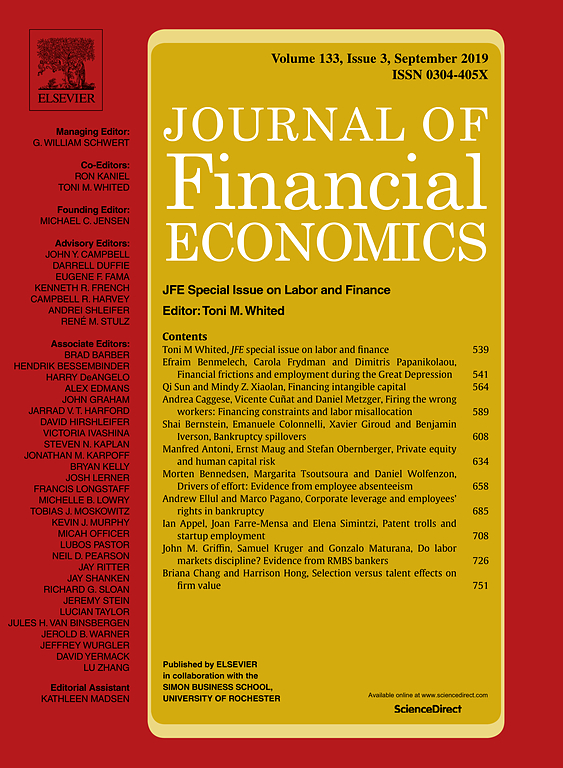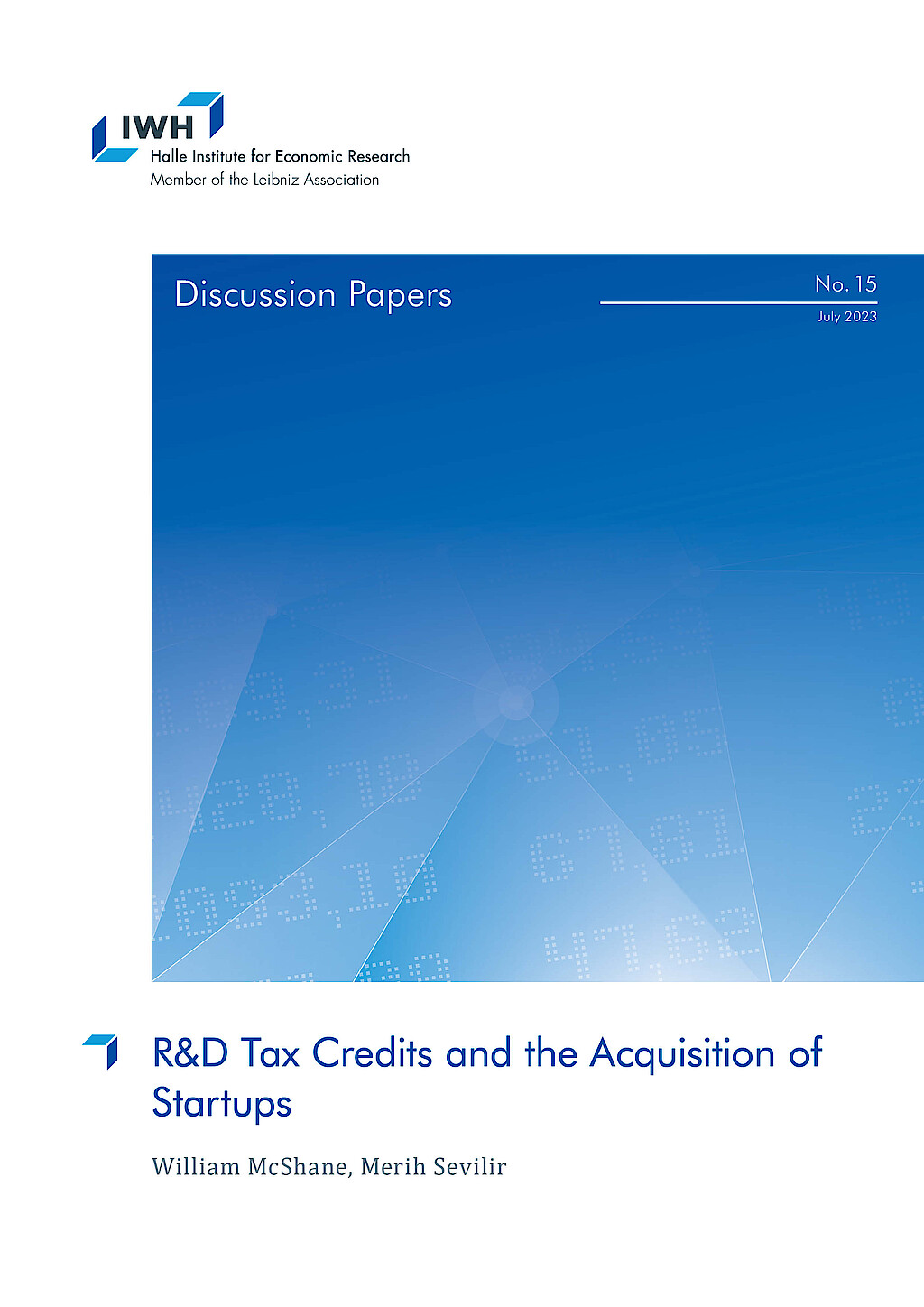Public Capital Markets and Startup Creation
Venture capital backed firms are economically very important. Although they represent less than 0.5% of firms that are born each year in the U.S., they account for 76% of market value of all public firms, employ 43% of employees in all public firms, generate 53% of net revenues of all public firms, and conduct 89% of total R&D spending in public firms.
Publicly traded firms represent an important role in the creation of venture capital backed startups. They have access to public equity and debt markets and raise capital from diversified investors. They also have R&D and operational expertise in the core industries they function. Finally, they have public capital market expertise, allowing them to operate in compliance with the requirements of being a publicly traded firm. These features give them a unique advantage in providing capital and labour to startups and in supporting startups’ transformation from private to publicly traded firms, relative to venture capital firms who have neither public capital market access nor physical presence or R&D expertise in a real industry.
The research group ‘Public Capital Markets and Startup Creation’ examines the reallocative role of publicly traded firms in funnelling capital from public capital markets to startups through Mergers and Acquisitions (M&As), and Corporate Venture Capital (CVC) investment. Second, it studies how publicly traded firms nurture and train skilled labour for the creation of startups. Third, it studies the gender-based gaps in entrepreneurship with a focus on how gender diversity at the executive ranks of publicly traded firms promotes the creation of female-founded startups developing innovations advancing women´s health and well-being.
Workpackage 1: Role of Public Capital Markets in Provision of Capital for Startup Creation and Complementarity between Public and Private Capital Markets
Workpackage 2: Role of Publicly Traded Firms to Nurture and Train High-skilled Entrepreneurial Labour
Workpackage 3: Mechanisms to Reduce Gender-based Gaps in Entrepreneurship
Research Cluster
Economic Dynamics and StabilityYour contact

- Department Laws, Regulations and Factor Markets
Refereed Publications

Organization and Financing of Innovation, and the Choice between Corporate and Independent Venture Capital
in: Journal of Financial and Quantitative Analysis, No. 6, 2009
Abstract
This paper examines the impact of competition on the optimal organization and financing structures in innovation-intensive industries. We show that as an optimal response to competition, firms may choose external organization structures established in collaboration with specialized start-ups where they provide start-up financing from their own resources. As the intensity of the competition to innovate increases, firms move from internal to external organization of projects to increase the speed of product innovation and to obtain a competitive advantage with respect to rival firms in their industry. We also show that as the level of competition increases, firms provide a higher level of financing for externally organized projects in the form of corporate venture capital (CVC). Our results help explain the emergence of organization and financing arrangements such as CVC and strategic alliances, where large established firms organize their projects in collaboration with external specialized firms and provide financing for externally organized projects from their own internal resources.

Entrepreneurship and the Platform Economy: Evidence from U.S. Tax Returns
in: Journal of Financial Economics, 2099
read publication
Private Equity in the Hospital Industry
in: Journal of Financial Economics, 2099
Abstract
We examine employment and patient outcomes at hospitals acquired by private equity (PE) firms and PE-backed hospitals. While employment declines at PE-acquired hospitals, core medical workers (physicians, nurses, and pharmacists) increase significantly. The proportion of wages paid to core workers increases at PE-acquired hospitals whereas the proportion paid to administrative employees declines. These results are most pronounced for deals where the acquirers are publicly traded PE-backed hospitals. Non-PE-backed acquirers also cut employment but do not increase core workers or reduce administrative expenditures. Finally, PE-backed acquirers are not associated with worse patient satisfaction or mortality rates compared to their non-PE-backed counterparts.
Working Papers

Can Nonprofits Save Lives Under Financial Stress? Evidence from the Hospital Industry
in: SSRN Working Paper, No. 4946064, 2024
Abstract
<p>We compare the effects of external financing shocks on patient mortality at nonprofit and for-profit hospitals. Using confidential patient-level data, we find that patient mortality increases to a lesser extent at nonprofit hospitals than at for-profit ones facing exogenous, negative shocks to debt capacity. Such an effect is not driven by patient characteristics or their choices of hospitals. It is concentrated among patients without private insurance and patients with higher-risk diagnoses. Potential economic mechanisms include nonprofit hospitals' having deeper cash reserves and greater ability to maintain spending on medical staff and equipment, even at the expense of lower profitability. Overall, our evidence suggests that nonprofit organizations can better serve social interests during financially challenging times.</p>

R&D Tax Credits and the Acquisition of Startups
in: IWH Discussion Papers, No. 15, 2023
Abstract
We propose a novel mechanism through which established firms contribute to the startup ecosystem: the allocation of R&D tax credits to startups via the M&A channel. We show that when established firms become eligible for R&D tax credits, they increase their R&D and M&A activity. In particular, they acquire more venture capital (VC)-backed startups, but not non-VC-backed firms. Moreover, the impact of R&D tax credits on firms’ R&D is increasing with their acquisition of VC-backed startups. The results suggest that established firms respond to R&D tax credits by acquiring startups rather than solely focusing on increasing their R&D intensity in-house. We also highlight evidence that startups do not appear to benefit from R&D tax credits directly, perhaps because they typically lack the taxable income necessary to directly benefit from the tax credits. In this context, established firms can play an intermediary role by acquiring startups and reallocating R&D tax credits, effectively relaxing the financial constraints faced by startups.













